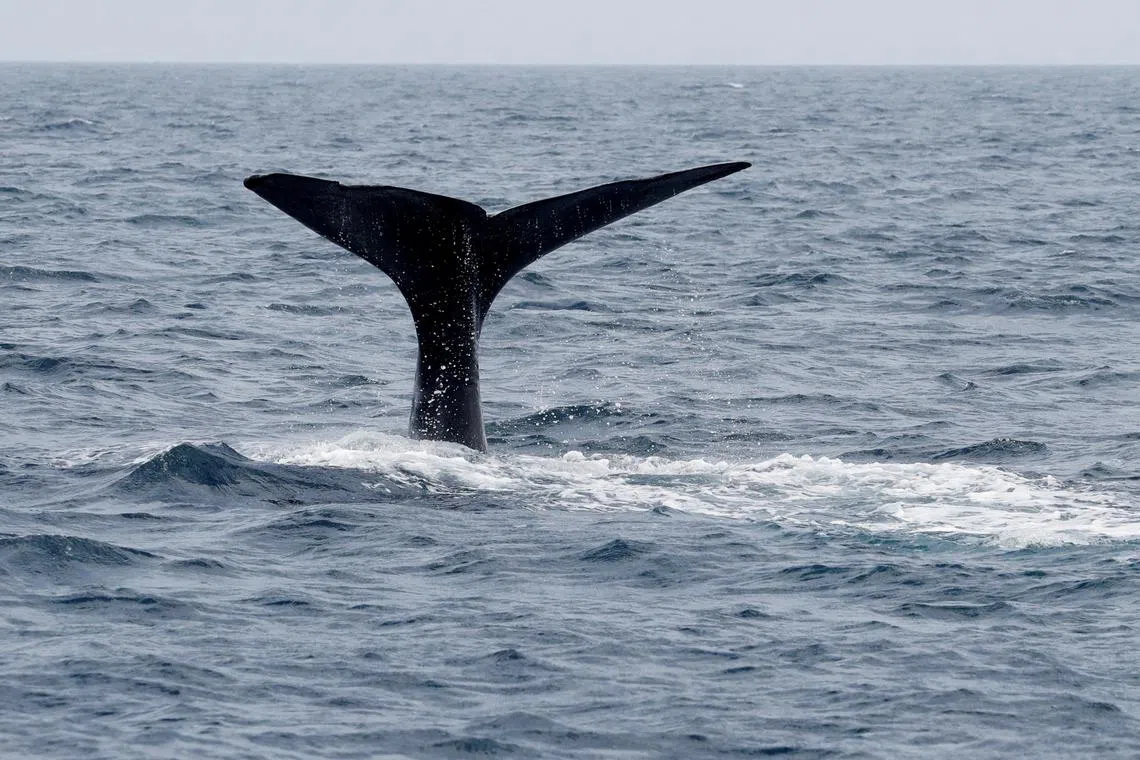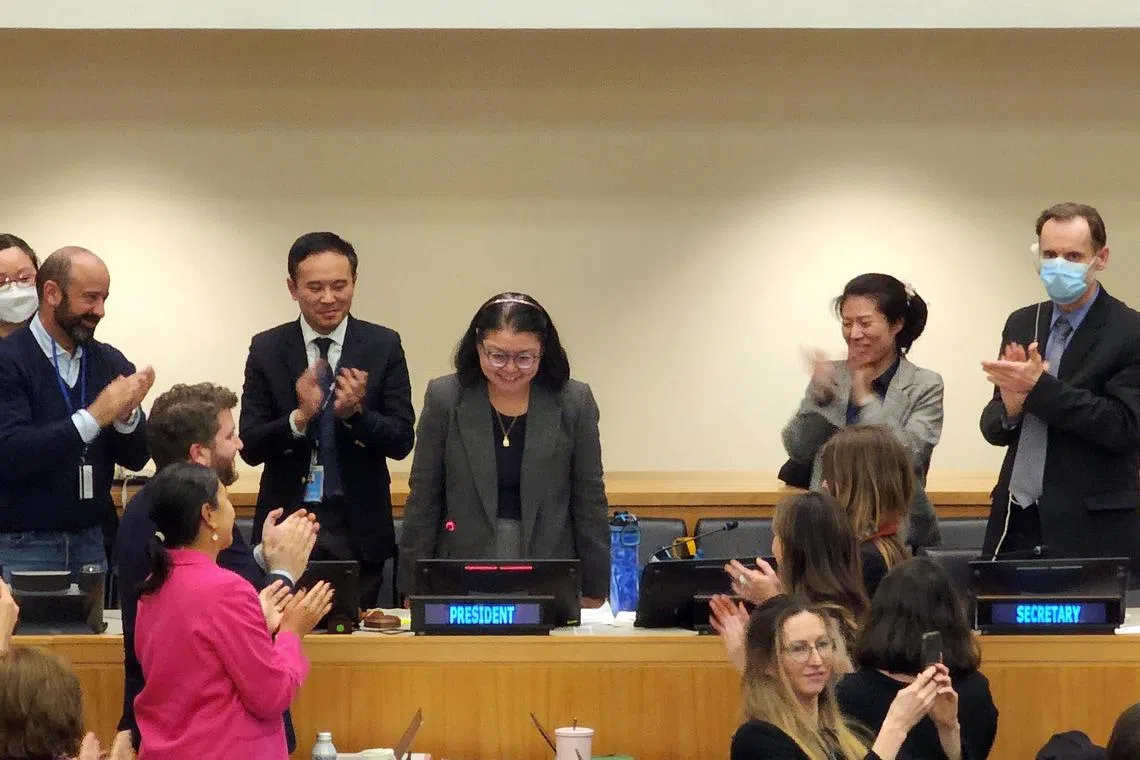High seas treaty shows what multilateralism can achieve, says Singapore’s oceans ambassador
Sign up now: Get ST's newsletters delivered to your inbox

More than 60 per cent of the world’s oceans have remained unprotected from growing threats, including overfishing and pollution.
PHOTO: REUTERS
Follow topic:
WASHINGTON – The United Nations high seas treaty agreed on March 5 by more than 190 nations
The treaty was nearly two decades in the making. Mrs Lee has helmed the negotiations since 2018 to try to seal the agreement, which is focused on conserving and protecting the immense web of life in the world’s oceans, the planet’s richest source of biodiversity.
Specifically, the treaty focuses on the high seas – that is, the biodiversity beyond national jurisdictions, or BBNJ.
The BBNJ agreement is only the latest example that “multilateralism remains relevant and as – if not more – important as before,” Mrs Lee told The Straits Times in an e-mail interview.
She is Singapore’s Ambassador for Oceans and Law of the Sea Issues and Special Envoy of the Minister for Foreign Affairs.
Only around 1 per cent of the oceans beyond national jurisdictions are protected areas. That means more than 60 per cent of the world’s oceans have remained unprotected from growing threats, including overfishing and pollution.
Emerging interest in seabed mining will also need closer scrutiny, and the treaty will help guide discussions.
According to the UN, the high seas refer to oceans beyond the territorial waters, exclusive economic zone and continental shelf of any country.
The BBNJ agreement contains innovative provisions, such as the commitment by developed countries to provide additional financial contributions to help developing countries conserve and sustainably use marine biodiversity, as well as to implement the agreement, Mrs Lee said.
“It also commits states to share benefits from the use of marine genetic resources, including by facilitating access to research samples and data of marine organisms of the areas beyond national jurisdiction for all countries,” she added.
Climate and biodiversity meetings in 2022 also represent “strong affirmation that the international community can achieve so much more when we come together for the betterment of our world”, she noted.
“Just last November, the United Nations Climate Change Conference COP27 held in Sharm el-Sheikh achieved a breakthrough agreement to establish a loss and damage fund for vulnerable countries that have been hit hard by climate disasters.
“A month later in Montreal, the 15th Conference of the Parties to the UN Convention on Biological Diversity (COP15) agreed on a historic package of measures to address biodiversity loss and restore natural ecosystems under the Kunming-Montreal Global Biodiversity Framework,” she said.

Delegates at the Intergovernmental Conference on Marine Biodiversity of Areas Beyond National Jurisdiction applauding its president Rena Lee earlier in March, after the successful conclusion of the BBNJ treaty.
PHOTO: MINISTRY OF FOREIGN AFFAIRS
Future-proof pact
Asked how confident she is in the robustness and ambition of the BBNJ treaty, and whether it will be a real turning point in halting or at least limiting further damage to oceanic ecosystems, Mrs Lee cited the final, gruelling 38 hours of negotiations.
“I can confidently say that all delegations recognised the importance of the issues and challenges... and approached the negotiations seriously with the goal of achieving an ambitious and future-proof BBNJ agreement,” she added.
“I think I can speak for everyone involved that ultimately what matters is that we... collectively managed to bring this ship to shore. The key word is collectively.”
Timeline to adoption
The next step is establishing an informal working group to undertake technical edits to ensure uniformity of terminology, and translate the treaty text in all six official languages of the UN, Mrs Lee said.
“There will be no reopening or discussion on substance,” she added.
“Given that we had managed to arrive at a clean, consensus text, I am confident that the BBNJ agreement will be adopted at the earliest opportunity.”
Each international treaty is unique, and it is not easy to predict when a treaty will enter into force, she noted.
According to the treaty, the agreement will enter into force 120 days after the date of deposit of the 60th instrument of ratification, approval, acceptance or accession. But when that will happen is unclear.
The landmark UN Convention on the Law of the Sea was adopted in 1982 but entered into force only in 1994. In contrast, the Paris Agreement was adopted in 2015 and entered into force the following year.
Mrs Lee said: “The mechanisms and processes that the BBNJ agreement puts in place can make a difference in how we tackle the problem of dwindling resources and loss of biodiversity which are continuing in the high seas.”


